Uncovering Mexico City's new culinary identity
Lucy Purdy has her taste buds seduced in a city whose rich and interwoven culinary heritage is just one way it is rewriting a reputation for danger.
They’re almost too beautiful to eat. Little pots of pastel-hued perfection, glinting in the late afternoon sun. I’m in the grounds of Chapultepec Castle in Mexico City and the frozen confectionery is calling to me, again. From the earthy reddish orange of tamarind and hibiscus chamoyada – an assault to the senses, at once sweet, spicy, salty and thrillingly cold – to lime, pineapple and mango versions. They look and taste beautiful, they cost five pesos (23p) and they’re impossible to resist.
This is a city of bold colours and big flavours. Festivals, fireworks food: the Mexicans like to give visitors a memorable slice of their culture and they’re often experiences delivered with lashings of zing. The capital has a reputation for violence, but it is actually less dangerous than some US cities, with improved surveillance and an increased police presence combining to make me feel nothing but safe. But this city isn’t about a lack of fear, or a lack of anything else. It’s vibrant, bursting with fascinating history, incredibly welcoming of visitors and packs a culinary punch to rival the most exotic of holiday destinations.
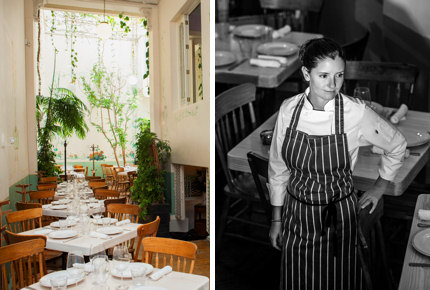 Tuck into gorgeous local dishes at award-winning Rosetta
Tuck into gorgeous local dishes at award-winning RosettaRosetta restaurant
Fresh, spicy, bursting with flavour, traditional Mexican cuisine has been rightly placed on the UNESCO intangible cultural heritage list. Perhaps this decision, in 2010, helped steer the direction of Mexico City’s cuisine, because a sense of heritage and tradition seeps through the menus of its top restaurants like chocolate coursing through a steaming stack of early morning churros.
Restaurants like Dulce Patria, Anatole France 100 (tel: +52 55 3300 3999), where chef Martha Ortiz infuses each dish with her passion for Mexican culture. With a joyful artistry, she conjures up her own takes on traditional plates, fusing elements of indigenous Mesoamerican cooking with Spanish and other European influences. And wow, it works. Like practised models stalking the catwalk, each offering is more seductive and confident than the last: from designer cocktails to brightly coloured, deliciously light breads; and from the delicate crunch of multicoloured tortilla to the zingy thrill of guacamole topped with fresh cheese and pomegranate seeds.
I’m not sure a salad exists on the planet to top the one I ate in Dulce Patria, where leaves from native Mexican herbs were topped with a mix of ground beans, a sharp white cheese and a majestic, smoky balsamic dressing. Rich, deeply flavoured – almost musky – the dish was topped with crispy crickets and delicate petals. Again, it was almost too beautiful to eat. Almost.
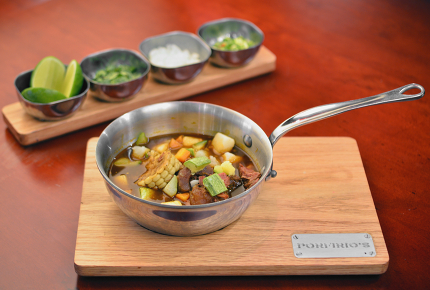 'Mole de olla' is a delicious meat and veg stew loved by Mexicans
'Mole de olla' is a delicious meat and veg stew loved by MexicansPorfirio's Restaurante
Rosetta restaurant, Colima 166 (tel: +52 55 5533 7804), in the city’s trendy Roma district, has also been making waves since opening its doors in 2010. Simplicity and seasonality are the bywords here, with city native, chef-owner Elena Reygadas, telling me she prefers to work strictly with what ingredients are available, relying on imports as little as possible.
“The menu is constantly changing, depending on what we’re offering, on whether the weather is hot or whether it’s raining,” she says.
“About 95% of ingredients are Mexican, though there are many influences to my food: I started in a French place and worked with Italians for many years. But I like to serve very simple food.”
It’s an approach which netted Rosetta the title of 33rd best restaurant in Latin America. Visitors can settle down into Rosetta’s calm buzz beneath walls painted with plants and birds and sink into dishes such as roasted figs, orange and ice cream made from hoja santa, a heart-shaped native Mexican herb.
It’s well placed for a post-lunch stroll too. Roma and Condesa neighbourhoods offer a welcome change of pace from the city’s busy downtown. Camera in hand, I wandered underneath restored art deco architecture, past welcoming parks and through the racks and rails of a vintage clothes store before chancing upon a charming pop-up market.
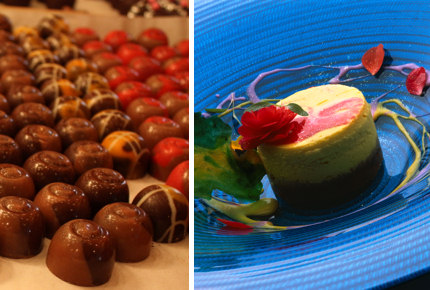 Mexico City has plenty of treats for the sweet-toothed too
Mexico City has plenty of treats for the sweet-toothed tooWulf Media | Dulce Patria
Here, I ran into Talitha Estrella Legaspi Serrano. She runs Cultiva Verde, an organisation selling heritage Mexican seed varieties to fuel a growing interest in organic, locally grown food amongst city dwellers.
“It’s becoming more important to people here,” she says, standing behind packets of carefully labelled carrot, corn, squash and zucchini seeds.
“Mexican people are starting to want food which is free from pesticides and people here in the city want to grow for relaxation too. All of our seeds are from Mexico and are completely organic.”
It’s a shift which ties into what I’ve seen in the city’s top restaurants: a renewed sense of pride in top quality Mexican food. This cuisine is a far cry from the Tex Mex-style dishes of the USA and often deep-fried – albeit usually delicious – food which is made on street stalls around the city. Interestingly, Mexican street-style food is being tweaked and honoured in these very restaurants too. And they’re attracting global attention.
Two Mexican restaurants, Pujol and Biko, were featured in the 2013 World’s 50 Best Restaurants list, with critics getting excited about the diversity in Mexico. Top chef Paco Méndez has likened the country’s rich and diverse cuisine to that of China, noting Mexico's wealth of different climates which produce culinary diversity in turn.
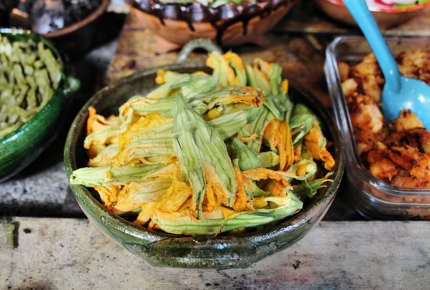 Healthier food and quality ingredients are more accessible
Healthier food and quality ingredients are more accessibleLucy Purdy
I chatted to Orlando Garay, a 30-year-old business analyst, about the transition happening among ordinary Mexico City residents.
“I believe the food is basically the same,” he says. “But the thing is that now we have more options for those who want to have a healthier diet. People are now open to a lot more information and options to improve the quality of ingredients or the way we prepare our food.”
He implored me to visit his best-loved food stalls, eyes sparkling as he described his favourite dishes. Because this is passion-filled food: hearty, and made with heart. Mexican cuisine is traditionally about families, celebration, and taste-first dishes created around ingredients which have been to hand for centuries. But the city is managing to weave these strands into a new and thriving culinary story, one being played out to global acclaim and which seems set to trickle down and answer a growing call from Mexicans and tourists alike.
From what I’ve seen and tasted, this isn’t happening at the expense of any native colour or vivaciousness. It has everything, and a tantalising sense of newness to boot.
So, what are you waiting for? With stomachs empty and taste buds ready to be tingled: head to the City.
TOP 5 FOODS TO TRY IN MEXICO CITY:
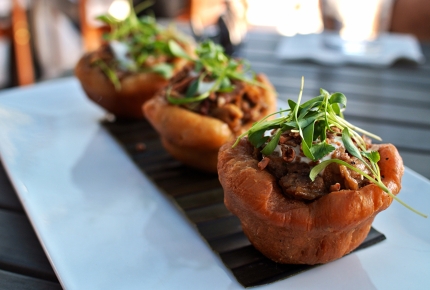 Pork belly 'gorditas' - enough said
Pork belly 'gorditas' - enough saidCreative Commons / David Hale Smith
1) Gordita
It means ‘little fat one’ in Spanish, but don’t let that put you off. These are tempting small pasty-like cakes, filled with cheese or meat. Available all over, and delicious.
2) Mole
Sauces, originating from Puebla, Oaxaca and Tlaxcala states, coming in various flavours, but the classic is a dark brown sauce often served over meat. It symbolises Mexico’s mixed indigenous and European culinary heritage, uniting ingredients from Europe and Africa as well as central America itself.
3) Aguas frescas
‘Fresh waters’ are as refreshing as they are colourful. Horchata – a traditional mix of almonds, seeds, nuts, rice and barley – together with tamarind and hibiscus, are all typical flavours.
4) Escamol
This is the edible larvae of a type of ants which live in the roots of the tequila and mescal plants in Mexico. If you give these a go, you’ll be eating in ancient company: the Aztecs are said to have enjoyed chomping these down.
5) Barbacoa
Dig a hole in the ground, light a fire and build a brick wall around. Wrap some meat in cactus leaves and cook for between eight and 12 hours. Serve on warm, corn tortillas with onions, lime juice and freshly chopped coriander.
Liked this? You may also enjoy these articles:
How Helsinki sparked a restaurant revolution
Top 10 weirdest restaurants
Drink like a local in Prague
Do you have any Feedback about this page?
© 2025 Columbus Travel Media Ltd. All rights reserved. No part of this site may be reproduced without our written permission, click here for information on Columbus Content Solutions.









 You know where
You know where